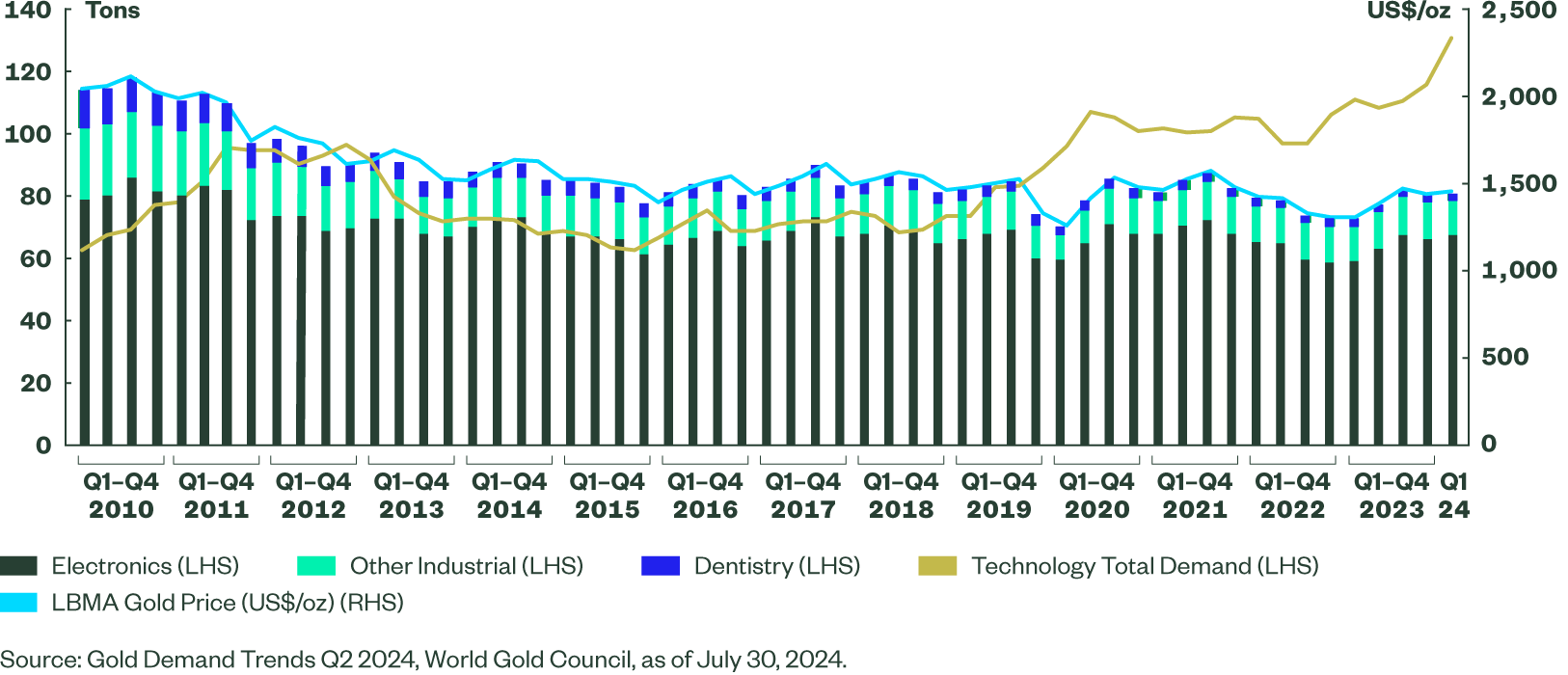IMPORTANT INFORMATION
PLEASE READ THESE TERMS & CONDITIONS CAREFULLY. BY CLICKING "ENTER SITE" AND ACCESSING THE INFORMATION THEREIN (THE "SITE"), YOU AGREE TO BE BOUND BY THESE TERMS & CONDITIONS AS WELL AS OUR PRIVACY POLICY AND ANY FUTURE REVISIONS. IF YOU DO NOT AGREE TO THE TERMS & CONDITIONS BELOW, DO NOT ACCESS THIS SITE, OR ANY PAGES THEREOF.
The products and services described on this Site are available to be marketed within the U.S. and to certain non-U.S. investors who may be eligible to receive certain product information in accordance with local jurisdiction private placement restrictions. The information provided on this Site is only for such persons and is not directed to any person in any jurisdiction where, by reason of that person's nationality, domicile, residence or otherwise, the publication or availability of this Site and the information within is prohibited. Persons under these restrictions must not access the Site.
It is your responsibility to be aware of and to observe all applicable laws and regulations of any relevant jurisdiction.
No Offer / Local Restrictions
Nothing contained in or on this Site should be construed as a solicitation of an offer to buy or offer, or a recommendation, to acquire or dispose of any security, commodity, investment or to engage in any other transaction. State Street Global Advisors and its affiliates (“SSGA”) offer a number of products and services designed specifically for various categories of investors. Not all products will be available to all investors. SSGA recommends that you seek independent financial advice before making any investment decisions The information provided on the Site is not intended for distribution to, or use by, any person or entity in any jurisdiction or country where such distribution or use would be contrary to law or regulation.
No Warranty
THE INFORMATION ON THE SITE IS PROVIDED "AS IS". NEITHER SSGA NOR ITS AFFILIATES WARRANTS THE ACCURACY OF THE MATERIALS PROVIDED HEREIN, EITHER EXPRESSLY OR IMPLIEDLY, FOR ANY PARTICULAR PURPOSE AND EACH EXPRESSLY DISCLAIMS ANY WARRANTIES OF MERCHANTABILITY OR FITNESS FOR A PARTICULAR PURPOSE.
No Reliance
Information contained in the Site is checked and updated by SSGA on a regular basis. However, data on the Site may become outdated. In addition, due to the risk that the Internet may be subject to interruption, transmission blackout, delayed transmission due to internet traffic, or incorrect data transmission due to public nature of the internet, the information contained in the Site may be incomplete, altered or tampered with, and may not present complete and accurate information. Therefore, SSGA does not assume any liability or guarantee for the timeliness, accuracy and completeness of the information provided. SSGA uses reasonable efforts to obtain information from sources which it believes to be reliable; however, SSGA makes no representation that the information or opinions contained on the Site is accurate, reliable or complete.
The information on the Site is provided for informational purposes only and is subject to change without notice. The investments and strategies discussed in the contents may not be suitable for all investors and are not obligations of, or guaranteed by, SSGA. Nothing contained on the Site constitutes investment, legal, tax or other advice nor is to be relied on in making an investment or other decision. You should obtain relevant and specific professional advice before making any investment decision. In particular, the information on this Site does not take into account your investment objectives, financial situation or particular needs. Before making an investment decision you should consider with the assistance of your professional securities adviser whether the information on this Site is appropriate in light of your particular investment needs, objectives and financial circumstances.
Exchange Traded Fund Disclosures
ETFs trade like stocks, are subject to investment risk, fluctuate in market value and may trade at prices above or below the ETFs net asset value. Brokerage commissions and ETF expenses will reduce returns.
"SPDR" is a registered trademark of Standard & Poor's Financial Services LLC ("S&P") and has been licensed for use by State Street Corporation. STANDARD & POOR'S, S&P, S&P 500 and S&P MIDCAP 400 are registered trademarks of Standard & Poor's Financial Services LLC No financial product offered by State Street Corporation or its affiliates is sponsored, endorsed, sold or promoted by S&P or its affiliates, and S&P and its affiliates make no representation, warranty or condition regarding the advisability of buying, selling or holding units/shares in such products. Further limitations and important information that could affect investors' rights are described in the prospectus for the applicable product.
Distributor: State Street Global Advisors Funds Distributors, LLC, member FINRA, SIPC, an indirect wholly owned subsidiary of State Street Corporation. References to State Street may include State Street Corporation and its affiliates. Certain State Street affiliates provide services and receive fees from the SPDR ETFs. ALPS Distributors, Inc., a registered broker-dealer, is distributor for SPDR® S&P® 500 ETF Trust, SPDR® S&P® MidCap 400 ETF Trust and SPDR® Dow Jones Industrial AverageSM ETF Trust, which are all unit investment trusts. ALPS Portfolio Solutions Distributor, Inc. is distributor for Select Sector SPDRs. ALPS Distributors, Inc. and ALPS Portfolio Solutions Distributor, Inc. are not affiliated with State Street Global Advisors Funds Distributors, LLC.
GENERAL RISK FACTORS
Historical performance is not necessarily indicative of future performance of an investment. The value of Units/Shares (as defined below) and the income from them may fall as well as rise and investors may not get back the amount invested.
Applications to create or redeem interests in any exchange traded fund referred to on this Site ("Units/Shares") may only be effected through participating dealers, and are generally only issued or redeemed in large blocks. Investors may request participating dealers to apply on their behalf for the creation and/or redemption of Units/Shares. Once listed, investors can also acquire or dispose of Units/Shares on the exchange on which such Units/Shares are listed like other publicly traded shares. However, listing does not guarantee a liquid market for Units/Shares. Units/Shares are traded on the relevant exchange at market price, which may be different from the net asset value per Unit/Share, and may be delisted.
The prospectus in respect of the offer of the Units in the relevant fund referred to on this Site is available and may be obtained upon request. Investors should read the relevant prospectus before deciding whether to acquire Units in the relevant fund. Units in the relevant fund are not obligations of, deposits in, or guaranteed by, SSGA or any of its affiliates. Investors who are not participating dealers or approved applicants have no right to request SSGA to redeem their Units while the Units are listed (see the relevant prospectus for details).
Please read carefully the risk disclosures in the relevant prospectus or other offering document before making any investment decision.
Limitations of Liability
Except to the extent to which any law prohibits such exclusion, SSGA excludes all liability for loss or damage of any kind (including direct, indirect and consequential loss and damage of business revenue, loss of profits, loss or corruption of data, failure to realise expected profits or savings or other commercial or economic loss of any kind), however caused, in contract, tort, under any statute or otherwise (including negligence) arising out of or in any way related to this Site. In no event, including negligence, will SSGA or its affiliates be liable for any loss or damage of any kind, including any direct, special indirect or consequential damages arising out of or in connection with the access of, use of, performance of, browsing in or linking to other sites from the Site.
Indemnification
As a condition of your use of the Site, you agree to indemnify and hold SSGA and its affiliates harmless from and against any and all claims, losses, liability, costs and expenses (including but not limited to attorneys' fees) arising from your use of the Site, or from your violation of these Terms.
Linked Websites
Should the viewer leave the Site via a link contained in the Site, the viewer does so at its own risk. The content to which you link will not have been developed, checked for accuracy, or otherwise reviewed by SSGA, and SSGA will not accept any responsibility whatsoever for the content of such sites or any losses related thereto.
SSGA Trademark
"State Street Global Advisors," and "SSGA" are trademarks of State Street Corporation. Copyright, trademark and other forms of proprietary rights protect the contents at the site. From time to time, the trademarks of other unaffiliated entities may be referred to on the Site and their respective owners own these trademarks. Trademark owners are not responsible for and have not reviewed this site and no representation or warranty, express or implied, as to its accuracy, or completeness of the materials presented on it. Please also see "Copyright" for further information.
Privacy
Please see the "Privacy" section for information on how SSGA handles personal data, what information is collected and how it is used and your rights in respect of any of your personal data collected by SSGA on this Site.
Changes and Modifications
SSGA reserves the right to change, modify, add, or delete, any content and these Terms & Conditions without notice. Users are advised to periodically review the contents of this website to be familiar with any modifications.
Governing Law and Jurisdiction
Any action arising out of these Terms & Conditions or the Site shall be litigated in, and only in, courts located in the Commonwealth of Massachusetts, and you agree to submit to the exclusive jurisdiction of those courts and further agree that they are a convenient forum for you.

